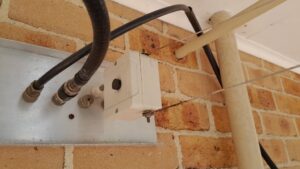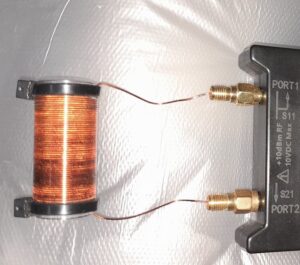Correspondents raise instances of damage to baluns from time to time, and there is a steady stream of reports online.
The thinking is often “my balun is rated at 5kW, how can I damage it with a transmitter that is only 100W?”
This article discusses heat dissipation from a small sealed plastic enclosure. This is not an unusual problem, it exists widely in industry and is solved routinely for enclosures ranging from small ones like these to large switchboard enclosures.
An example balun deployment
Above is a balun enclosure located under the soffit of the building, so outside in free air and where the sun will not shine on it. Continue reading Power dissipation of a sealed plastic balun enclosure


